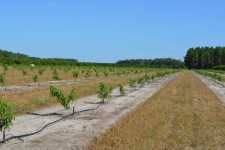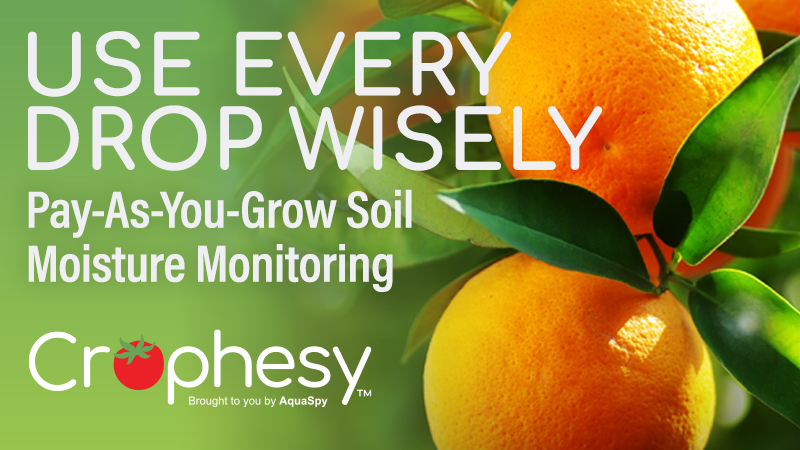Peaches Are Finding A Fit In Florida
James Shinn’s family has a long history of growing citrus in Florida beginning in the 1920s around the Lake Alfred area. Challenges have come and gone but none have represented the threat he found in his groves in 2007.
“That’s when we found greening in our Vero Beach groves,” says Shinn. “We got really worried because it spread so fast, and we were taking out so many infected trees.”
After the find in Vero Beach, he knew it would not be long before the disease showed up in his Polk County groves. Given the small groves and nature of plantings in the area, Shinn knew it would be a major threat there as well.
“We do have a major problem in our Polk County groves, but at least seeing greening first in Vero Beach gave me some warning to start protecting my trees before a lot of folks in the area realized we had a problem,” says Shinn.
The onslaught of greening also led Shinn to begin researching alternative crops. “Greening gave me a pretty dire vision of the future, so we started looking for ways to diversify,” he says.
→5 Pointers To Pump Up Your Peach Production
Shinn considered blueberries and avocados as potential alternatives. “We even planted 500 lychee plants in Vero Beach in 2010, then we had a cold spell and it killed all 500 plants,” he says. “I am always looking for a new alternative to try, but I want to focus on a tree crop because that is what my equipment, irrigation, and land is set up for.”
The tree crop that Shinn settled on is peaches and his first orchard was planted in January 2009. Since that time, he has traversed the learning curve that comes with any new crop, but he is increasingly confident in peaches as a solid candidate to diversify his operation.
First Planting
“We decide to plant our first orchard on our Green Swamp Reserve property on the pasture land between two of our citrus blocks there,” says Shinn. “I chose the spot because it was a little colder and sat lower than the two groves. The ground also was a little wetter with good organic and clay soil. We planted there and installed low-volume irrigation thinking this would be sort of a replication of how they do it in Georgia.”
That first planting taught Shinn that peaches do not like wet ground. “Peaches do not like wet feet and it doesn’t even have to be standing water,” he says. “If the water doesn’t drain out quickly, the peaches will die and it can happy quickly.”
In the first year, Shinn lost half of the block of his first planting. He chalks it up to a lesson learned and one of many that must be learned about growing peaches in Florida. “I joke with people that I’ve made about every mistake you can make with these things,” he says.
Shinn had the first block pushed and brought in a grader and rolled up single row beds and planted again and has not had a problem since with water-logged peaches in the first orchard. “We drain water out toward the swamp,” he says. “We learned that bedding is very important in low areas to grow peaches.”
Finding The Right Balance

When the trees start blooming (end of January), Shinn begins applying liquid fertilizer weekly. “I put out the bulk of my fertilizer during this period because that is when I want to push the growth,” he says. “When the fruit is done, I shut the fertilizer down. And in the summertime, I am not putting any out because these things grow like crazy. We apply granular fertilizer only to catch up when we are behind in fertilizer applications.
“When we see some cold spells coming around Thanksgiving or the first week in December, we defoliate the trees,” says Shinn. “We want to force them all to be equal and go dormant at the same time. That way, we get them all blooming at the same time. I don’t want a prolonged bloom. I want to get in there and get done while the market still needs Florida peaches.”
Irrigation also needs special attention, considering peaches don’t like wet soil. “We have low-volume systems and I like using a Max-One fan,” says Shinn. “On my peach blocks near Lake Alfred, I have electronic timers and we run them Monday, Wednesday, and Friday for one hour. I run them at noon, so they don’t stay wet. This is not like citrus where we are making four-and five-hour runs.”
Shinn also has configured his new planting to be interchangeable from citrus to peaches. His peaches are planted 15 x 20 (145 trees per acre) or for citrus 5 x 10 x 20 (290 trees per acre) with 145 jets per acre.
Mother Nature’s Whims
Some peach growers marked success or failure this past season on their ability to protect against the cold. “There were folks who lost their crop this year because of the late cold spell,” says Shinn. “I think you have to have something for cold protection.”
When cold weather is forecast, Shinn places his Maxijets on 3 ½-foot PVC stakes to get the mist inside the tree canopy. “The fans work better for cold protection because it creates a better mist,” he says.
Another weather consideration is wind. Ripened peaches will blow to the ground or bruise, making windbreaks an important addition around orchards. Shinn has planted eucalyptus around some of his peaches to protect against the wind.
Gaining Size
Getting size on Florida peaches can be a challenge. Thinning is a costly and labor intensive process, but is critical to maximize fruit set and size. “Anybody new to planting peaches probably is not going to like thinning,” says Shinn. “It feels like you are just about knocking off every peach out there the first round of thinning because there are so many on the tree.”
Shinn says he tries to space fruit 6 to 9 inches down the limb depending on the size of the limb and its ability to support fruit. “For the workers, it is very tedious; but for fruit size, thinning is everything,” he says.
The Perfect Peach
Shinn has learned that different peach varieties can be very site specific in their performance. His first planting was Flordaglo, which he says is a fantastic peach, but falls apart in shipping. The variety has been pushed and he believes UFOne will fit best on his colder Green Swamp Reserve orchard.
Shinn believes UFBest will be a good fit in warmer areas. “UFBest is a gorgeous peach, the pack out is fantastic, and it has great size,” he says.
It’s Hard Work
“How is growing peaches different from growing citrus?” asks Shinn. “You have to be in the orchards those 80 to 95 days from bloom until harvest. It is a hands-on experience that is much more akin to growing a row crop like squash or strawberries.
“We are only a few years in playing with peaches. Just when I think I have it all figured out, something happens to change my opinion. It keeps me working, but I believe peaches are a viable crop here in Florida.”










